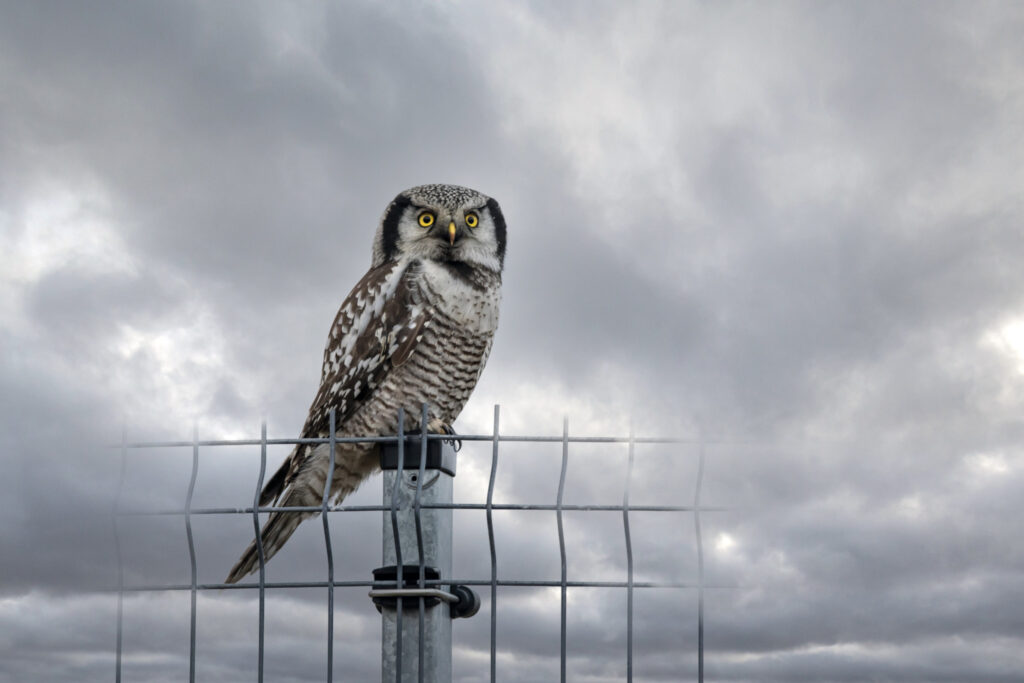
[Wikipedia]
The Northern Hawk-Owl (Surnia ulula) is a species of owl belonging to the family Strigidae. Here are some key characteristics and information about this fascinating bird:
- Appearance: The Northern Hawk-Owl has a distinctive appearance, resembling a small hawk rather than a typical owl. It has a relatively slim body with long, pointed wings and a long, rounded tail. The plumage is grayish-brown with white spotting on the upperparts and streaking on the underparts. The facial disc is not as pronounced as in other owl species, and it has bright yellow eyes.
- Distribution: The Northern Hawk-Owl is found in the northern regions of the Northern Hemisphere, including boreal forests and tundra habitats. Its range extends across North America, Europe, and Asia, with populations in countries such as Canada, Alaska, Scandinavia, Russia, and parts of northern Asia.
- Habitat: These owls inhabit a variety of forested and open habitats, including coniferous forests, mixed woodlands, marshes, bogs, and open tundra. They are often associated with areas of open terrain interspersed with patches of trees, where they can hunt for prey.
- Behavior: Northern Hawk-Owls are diurnal hunters, meaning they are active during the day, especially during the breeding season. They have keen eyesight and excellent hearing, which they use to locate prey such as small mammals, birds, and insects. Unlike many other owl species, they are known to hunt by perching on exposed branches or poles and scanning the surrounding area for prey.
- Reproduction: Breeding behavior in Northern Hawk-Owls typically occurs from late winter to early spring. They build nests in trees or on cliffs, using abandoned nests of other birds or natural cavities. The female lays a clutch of eggs, usually ranging from 3 to 7 eggs, which are incubated for about 25 to 30 days. Both parents participate in caring for the young owlets until they fledge.
- Conservation: The Northern Hawk-Owl is not considered globally threatened, and its population appears to be stable. However, local populations may face threats from habitat loss, forest fragmentation, and climate change. Conservation efforts focus on preserving and managing suitable habitats, including the protection of large tracts of boreal forest and tundra ecosystems.
Overall, the Northern Hawk-Owl is a remarkable owl species with unique adaptations for hunting in open landscapes. Its striking appearance and diurnal hunting behavior make it a fascinating bird to observe in its natural habitat.
Visited 893 times, 4 visit(s) today
Views: 1422
Subscribe to the newsletter:
